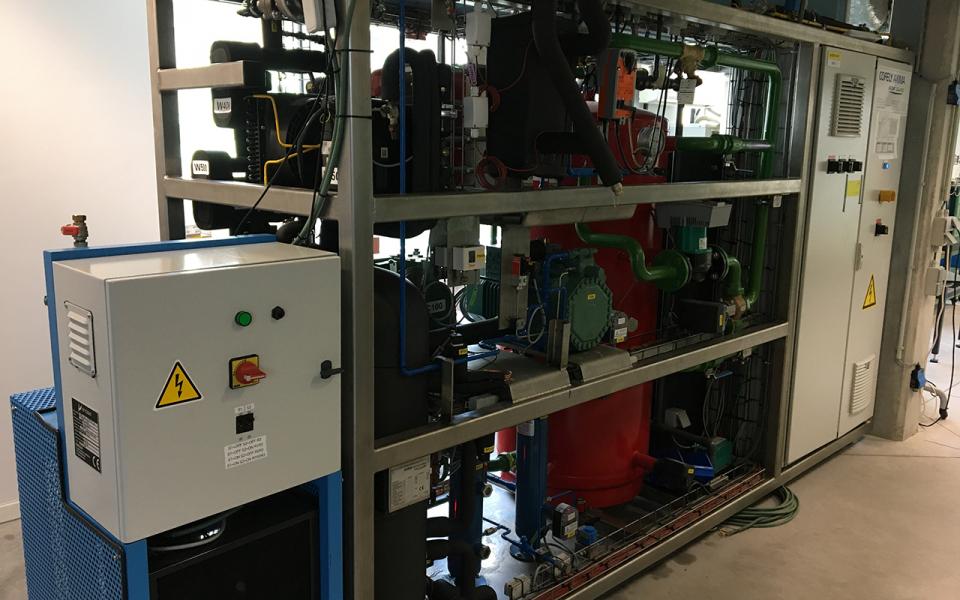The Science & Technology department of the AP University College has a transcritical CO2 cooling and freezing installation, which can recover the extracted heat (order of magnitude = 10kW) as much as possible (heat pump function). Depending on the required capacities and temperatures for cooling, freezing and heating, the operating conditions of the installation can be adjusted to obtain optimal energy consumption.
The CO2 installation will always produce an amount of heat as a result of the cooling/freezing. If there is no or a small heat demand, this heat can be considered as residual heat. In order to still make good use of this residual heat, we can convert it into electricity which can be used to drive the compressors in the CO2 installation.
In order to generate electricity from residual heat, a high residual heat temperature is required in most cases. In order to achieve this high temperature, we can force our CO2 installation into the transcritical operating area (high residual heat temperature and high pressure) during the winter months, while in the summer, due to the higher surrounding temperature, the installation automatically operates above the critical point.
The aim of this research is to carry out practice-oriented research into the conversion of the residual heat (max. 150°C - thus relatively low temperature) from a transcritical CO2 installation to electricity via an ORC based on a real and representative installation.
During the literature study (first phase of the project) we define the scope of the ORC (power range 0.5 kWe - 10 kWe and temperature range 80° -150°C). In this phase we also analyse the regulation possibilities and the practical implementation of the ORC. In a second phase, the ORC is adapted to the existing CO2 installation and in a third and final phase, the ORC is tested and the test results are evaluated.
During this research we try to answer the following questions:
- To what extent is the generation of electricity from the residual heat of the CO2 installation possible (necessary temperature and power range)?
- Which energy savings are achievable in function of the operating conditions?
- Is the application of an ORC to a transcritical CO2 cooling installation economically justified?






